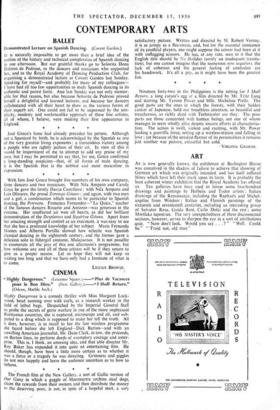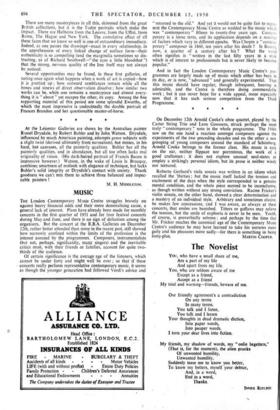ART
As is now generally known, the exhibition at Burlington House was conceived in the shadow of failure to achieve that showing of German art which was originally intended, and has itself suffered blows which have left their mark upon its form. It is probably the least coherent winter exhibition that the Royal Academy has offered us. Ten galleries ,have been used to house some two-hundred drawings and paintings by Holbein and Tudor artists ; Italian drawings of the Renaissance, including the Raphaels and Michel- angelos from Windsor ; Italian and Flemish paintings of the sixteenth and seventeenth centuries, including an interesting group of Salvator Rosa, Guido Reni, Carlo Dolci and the rest ; some Mortlake tapestries. The very unexpectedness of these disconnected sections, however, serves to sharpen the eye in a sort of attributions quiz. "Now don't look. Would you say . . . ? " "Well. Could be." " 'Fraid not, old man." There are many masterpieces in all this, skimmed from the great British collections, but it is the Tudor portraits which make the impact. There are Holbeins from the Louvre, from the Uffizi, from Rome, The Hague and New York. The cumulative effect of all these faces that we know so well is one of extraordinary immediacy. Indeed, as one passes the drawing1:—exact in every relationship, in the apprehension of every linked change of surface form—their authenticity is so compelling (and the marginalia sometimes so dis- tracting, as of Richard Southwell—" the eyes a little bloodshot ") that the strong, nervous quality of the line itself may not always be noticed.
Several opportunities may be found, in these first galleries, of noting once again what happens when a work of art is copied—how it is prettied up ; how outward semblances remain while all the bones and sinews of direct observation dissolve ; how similar two works can be, while one remains a masterpiece and almost every- thing it is " about " yet escapes the other, its copy. Among the fine supporting material of this period are some splendid Eworths, of which the most impressive is undoubtedly the double portrait of Frances Brandon and her questionable master-of-horse.
At the Leicester Galleries are shows by the Australian painter Russel Drysdale, by Robert Buhler and by John Watson. Drysdale, influenced by much American painting, attempts genre subjects with a slight twist (derived ultimately from surrealism), but misses, in his hard, hot canvases, all the painterly qualities. Buhler has all the painterly qualities, and in abundance, but all too often lacks real originality of vision. (His dark-haired portrait of Francis Bacon is impressive however.) Watson, in the wake of Louis le Brocquy, combines smartness of outlook with elegance of technique, but lacks Buhler's solid integrity or Drysdale's contact with society. Thank goodness we can't mix them to achieve three balanced and impec- cable painters I M. H. MIDDLETON.







































 Previous page
Previous page